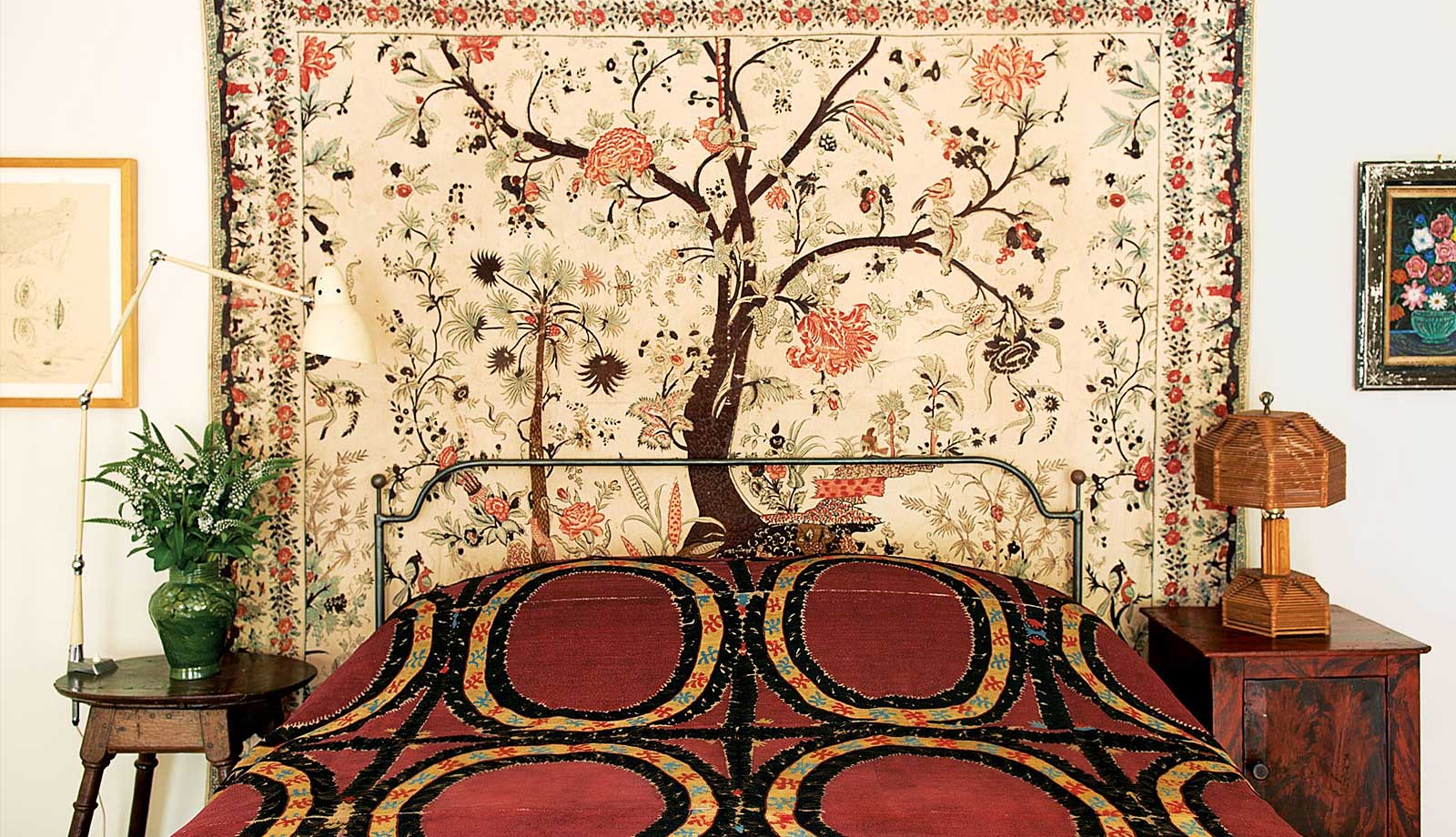From the Farsi word for needle, “suzan,” Suzani is a type of embroidered and decorative tribal textise, some of the most outstanding examples of which may be found in Central Asia.
These handmade works of art are the cultural and civilizational products of the Silk Road, which passed through Central Asia and as a result Tajikistan, Uzbekistan, and Kazakhstan are among the leaders in this remarkable craft. Today the leading types of Suzani include Bukhara Suzani, Shakhrisabz Suzani, Samarkand Suzani, Lakai Suzani, and Nurata Suzani.
The art of Suzani is as old as the Silk Road itself, and indeed the history behind Suzani may be seen as a projection of the history of this most famous of trade routes. You can even see the traces of these different cultures and teachings when you study the specific colors and motifs of Suzanis. Using either silk or cotton thread, chain, satin, and buttonhole stitches represent the predominant techniques for the elegant designs.
Suzani motifs vary according to the period and culture in which they’re found, indeed they are as varied and colorful as the cultures from which they stem. Zoroastrian beliefs have influenced the art from with start motifs of sun and moon disks, as well as designs based on tulips (a word which itself is of Central Asian derivation), pomegranates, vina leaves, and irises are all very common in Suzani work.
This beautiful mode of embroidery is designed for many different purposes, from apparel to decoration. Over the past 15 centuries as people’s needs have changed, the art of Suzani has developed along with them. Today we see this extraordinary variety of uses developed over millennia from hangings, coverings, pillowcases, dowry bundles and more. Today some of the more splendid examples of Suzani that we see come in the form of bedspreads, tablecloths, and seat coverings as well as clothing accessories.




 No products in the cart.
No products in the cart. 